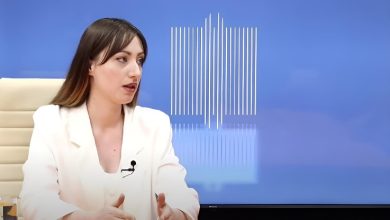The advertising market in Moldova is on hold

Ludmila Andronic, communicator
Whether we like advertising or not, it is still the engine of media development, providing the media with the most sustainable, fair, and decent income.
In addition to its financial role, advertising also has a double reflective role. On the one hand, the existence, production, and dissemination of advertising testifies to the maturity and functionality of the economy (i.e. if you have nothing to promote and you have no funds to do it, it means that you have not reached a certain level of development), and vice versa, the scarcity of advertising in certain media is an indicator of its quality deficiencies (i.e. if you have poor quality content, and if you have no content, you have no audiences and, respectively, advertising providers do not crowd at your door).
A look about decade back shows us that the advertising market in Moldova at that time was estimated in monetary value at about USD 45-50 million. In a 2011 interview for Radio Free Europe, Iurie Gotișan said that “the lion’s share of this amount fell on TV advertising, which accounted for about 65-70% of the market, that is about USD 20 million. The rest of the market falls on outdoor advertising …, followed by radio advertising, print media, and online advertising.” In that interview, Iurie Gotișan also said that the advertising market in Moldova is still in an embryonic state and that we should expect a spectacular increase in the volume of online advertising, given the increasing access of Moldovans to this technology.
Ah, it all could have come true if the events that occurred later had not left such a deep imprint on our lives, on the economy, and on advertising. At the time when Mr. Gotișan was giving that interview, no one yet suspected that we would be affected by the COVID-19 pandemic, followed by a war right on the borders of the country. The first event changed our habits, including those of consumption, and the second one forced us to change our attitudes. The first one affected us physically, the second one presses us through hybrid means, whose vehicle is the media. In both cases, the media and advertising markets were affected.
The pandemic “infects” advertising, too
Already in 2020, the year when we learned that “the world will never be the same again” due to the pandemic, a report by the Association of Advertising Agencies of Moldova showed that the biggest fall in the first pandemic year was recorded by the TV sector (-3.45%), which lost half a million euros in 2020 compared to 2019 (from EUR 14.5 million to EUR 14.0 million). Also, in the first pandemic year, investments in outdoor advertising decreased significantly, by about EUR 400 thousand (-10%), while in print media they decreased by about EUR 200 thousand (-25%). Online media, however, continued to grow with an addition of EUR 800 thousand (+15%) in 2020 compared to the previous year. Radio has very bravely maintained its positions and even added 100 thousand investments (+8%) compared to the previous year. Thus, television had the largest market share, 53%, followed by online media (28%), outdoor advertising (12%), print media (4%), and radio (3%).
What happened in the advertising market perfectly reflects the state of affairs in the entire economy of the country. As it was easy to assume, companies were very cautious in spending, and the first budgets affected were those of advertising. Most companies in Moldova decided, at least for the first half of the year, to stop or reduce to the maximum the volume of advertising, not sure how they would operate or perform in conditions of the pandemic and isolation. Subsequently, the market adapted to new realities – this is how the growth of online advertising is explained. How could you leave the virtual space as long as most consumers work from home and on the computer?! It’s just that, once migrated to the digital space, advertising, for the most part, no longer returned to the other media, as the cost and efficiency “on the computer” turned out to be more balanced than “on glass” or “on poster”. And that was the first blow, especially for televisions and billboards. It is true that political advertising, related to elections, was expected as a godsend (which, by the way, happens every time), but it was much more modest at the last elections.
In 2021, the trend between decrease and reconfiguration continued: investments in television amounted to EUR 14.5 million, up by 3.5% compared to 2020. Print media stagnated, remaining at the same level as in 2020, EUR 0.6 million (0%); radio and online media increased by 10% and 7%, respectively; while the only type of media that continued bearing investment losses was outdoor advertising, down 30% from the previous year. The study “Media Market in Moldova: Realities and Trends”, launched by the Independent Journalism Center in 2022, found the following configuration: television had the largest market share (53%), followed by online media (28%), outdoor advertising (12%), print media (4%), and radio (3%).
When bullets whistle, advertising is silent?
In a recent article by Ion Câșlea in Business Class Magazine, Dumitru Țîra, the general manager of Realitatea TV, said, “In 2022, the TV market was to constitute 13 million, but, because of the war, it decreased to 9.5 million euros. Part of this amount went to advertising agencies for the services provided, and in the end about seven million euros reached televisions.”
Data analysis for 2022 shows that 20 out of 68 audiovisual media service providers had 100% revenue from commercial audiovisual communications, and 5 providers reported that revenue from commercial audiovisual communications constitutes more than 90% of their funding sources. The highest annual revenue from commercial communications for an audiovisual media service is MDL 23,376,384, the lowest is MDL 1,176.
Mariana Rață, senior editor of the TV8 television station, noted in a market study in December 2022 that only nine TV stations in Moldova out of the 40 nationwide stations controlled at that time over 60% of the local advertising market. They either mainly retransmitted Russian products or were even owned by Russian entities. Among them was RTR Moldova, which, despite holding a commercial share of just over 20%, took over almost a third of all advertising budgets in the country, with an infinitesimal domestic product.
According to the source, it was not only about commercial or economic inequity, but also about an information space security problem. Especially because these stations, together with two advertising sales houses, had launched actions to reconcentrate and redistribute the market, particular favor being given to televisions that retransmitted from Russia or belonged to the Russian Federation. He also warned that if things continued in the same way, in 2023 those two sales houses, which were basically one, in terms of staff, would hold between 60% and 66% of the audience.
Subsequently, essential changes occurred on the TV market in Moldova. Within a year, starting with December 2022, the Commission for Exceptional Situations suspended one by one the broadcasting licenses for 12 TV stations. We are not going to look at the necessity or expediency of these decisions here. We will remind only that these stations, in one way or another, are related to Moldovan politicians and ex-politicians with the current status of fugitives and that, in the situation when a war is going on right on our borders and we are the clear target of a propaganda and disinformation campaign on the part of Russia, its mouthpieces had to be somewhat silenced.
The most interesting thing, however, happened with advertising and its distribution. Focused on propaganda and overflowing with entertainment shows, these 12 television stations were watched by a considerable percentage of our fellow nationals, or at least that is what the measurements showed. I’m saying “at least” because many market professionals say they have doubts and sufficient reason not to believe these measurements. However, having no alternatives, we are forced to accept the results as such, as they are the only ones officially documented. Once you have a large audience, you have more advertising revenue. Without exhausting those who are not of the profession, I will say that advertising on TV nowadays is no longer bought per minutes or preferences, but per GRP (gross rating point). GRP represents a percentage of all potential adult viewers or radio listeners in a market.
If after December 2022, when the first six stations were excluded, the basic scenario showed an offer from the televisions remaining on the market of 1.34 million GRP, after October 2023 the offer scenario reduced to 827.36 thousand points. Fewer GRPs means either less money earned, or higher advertising prices.
Finally, what is the current situation?
Until January 1, the market remained on hold. Will the 12 stations be removed from suspension or not and will the offer of GRPs increase? If not, how will prices evolve? None of the parties – TV stations and customers – made any move, trying to wait for a suitable moment, until it manifested in the decision to extend the suspension period, since the government still considered the 12 stations a threat to the security of Moldova.
The risks for the TV advertising market come from two sides: the lack of a consistent audience can lead to the reduction of budgets allocated to this type of media or to their redistribution to other vehicles, most likely digital. And this might remain real for a very long time. But that is another topic of reflection for televisions which, in turn, should review their business models, or … disappear, as some professionals think (for example, Dumitru Țîra, director of Realitatea TV, believes that for a small media market, such as Moldova, 40 existing stations are too many), and they are somewhat right, if we look at things strictly from the perspective of the efficiency and quality of the media product.
After the collapse caused by the suspension of stations, TV advertising providers only continued campaigns that could not be stopped or that had not been affected. Some campaigns were redistributed, except, as I mentioned, the number of GRPs available had dropped dramatically. As a result, the market “narrowed” by about a million dollars. We reached the situation of an “over-demand” that could not be covered in any way. At the moment, Octavian Hanganu notes that in most cases, the advertising that we see on TV “are some end pieces” left over from previously concluded contracts, because most advertising customers are waiting for things to clear up.
What might “clear up” mean? First of all, we are talking about the fact that the shortage of GRPs led to price inflation. Prices have doubled. Suppliers, including large international customers, would accept a price increase, but not a 100% increase. So, few of them risked approaching advertising broadcasters to initiate discussions. Although, Octavian Hanganu notes, a few of them returned to the TV market. Others are waiting, hoping things and prices will calm down.
Televisions, in turn, understand that they need advertising, but they neither see any point in operating at the old prices, nor could they do it anymore. Obviously, towards the second half of the year, customers will have to come back, business laws will require it, only at that time only half of the GRPs will be available. And then again there will be over-demand, when customers might not be able to place advertising even for big money.
A supposed migration to other media vehicles did not take place, since the offer of spaces there is not abundant, either. Thus, it remains only to note that in 2024, most likely, the advertising market in our country will again register a decrease with a dramatic direct impact on the consumer segment of the economy.




